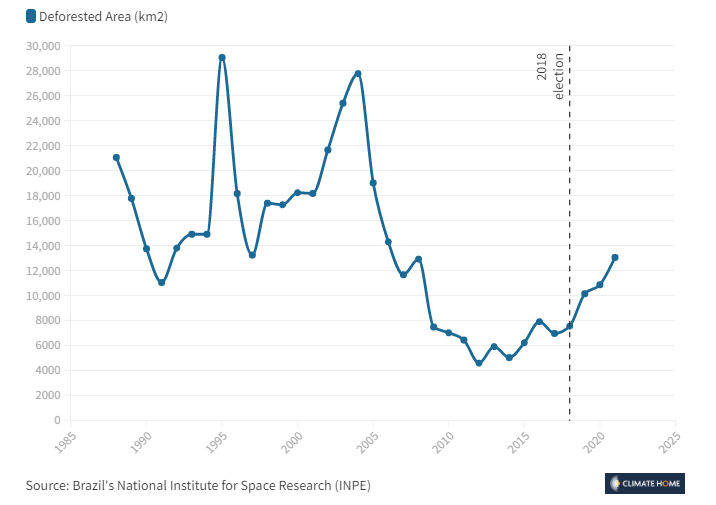“I think you’re going to see a very significant amount of money flow into natural capital as people figure out that nature is a very large proportion of the answer to decarbonisation. There is no route to net zero without biodiversity.” - Peter Harrison, chief executive of Schroders
Forest, land, and agriculture industries account for over a fifth of global carbon emissions. However, half of these emissions (~3.9 Gt CO2e) arise from deforestation and land conversion. One-fifth of the emissions from clearing forests occur in Brazil, a major factor in the country being the world’s sixth-largest emitter of greenhouse gases.
The rate of deforestation in Brazil has slowed since the 1990’s and early 2000’s. The rate of land clearance fell from 28 thousand km2 in 2004 to less than 5 thousand km2 in 2012. The Brazilian government sought to slow down the pace at which land owners and illegal operators exploit the forest by introducing restrictions on the clearing of private lands, coupled with punitive fines or property seizures.
However, over the past decade, and particularly since 2018, deforestation has begun to rise rapidly again. The latest satellite data for 2021 shows that over 13 thousand km2 of land was cleared, an almost three-fold rise in deforestation. Meanwhile, data covering the first nine months of 2022 reveals that deforestation is up 23% on the same period in 2021.
Brazilian deforestation rates, km2
Ever since the election of president Jair Bolsonaro in 2018, restrictions on the exploitation of the forest have been relaxed. For example, Bolsonaro threw his support behind the nation’s agricultural sector, weakened existing environmental protections and legitimised the illegal use of the forest. The payoff from cutting down trees looked much more favourable under his government.
Anecdotal evidence suggests that illegal operators stepped up their clearance of the forests ahead of this October presidential election, anticipating the possibility of tighter restrictions under his opponent who campaigned on a platform of vowing to end the deforestation of the Amazon.
The popular narrative is that the rate at which Brazil’s forests are cleared is closely correlated with the politics of deforestation. However, evidence suggests that macroeconomic factors may be the biggest driver.




